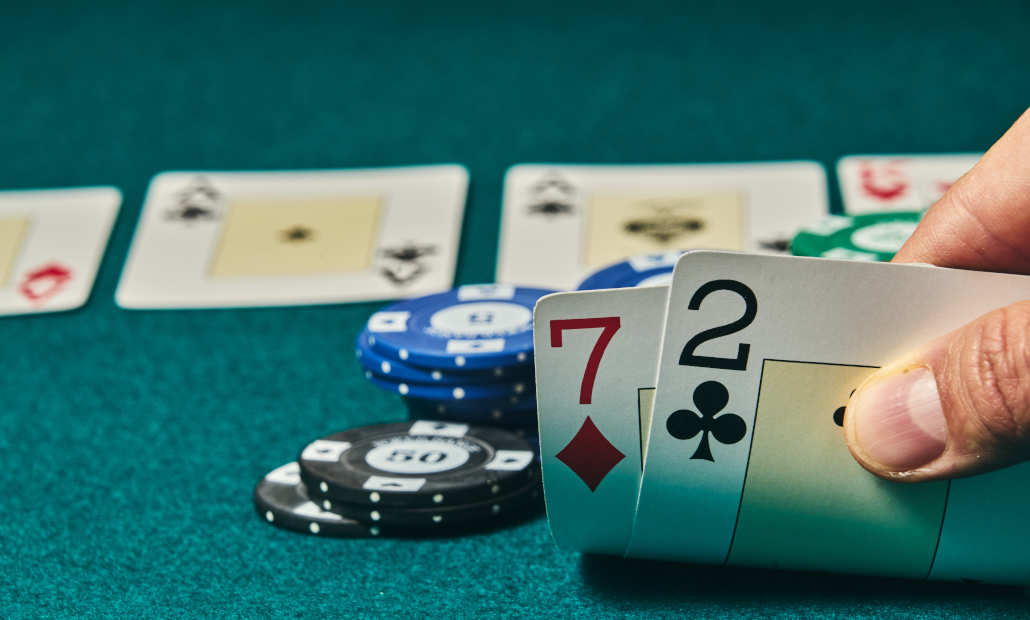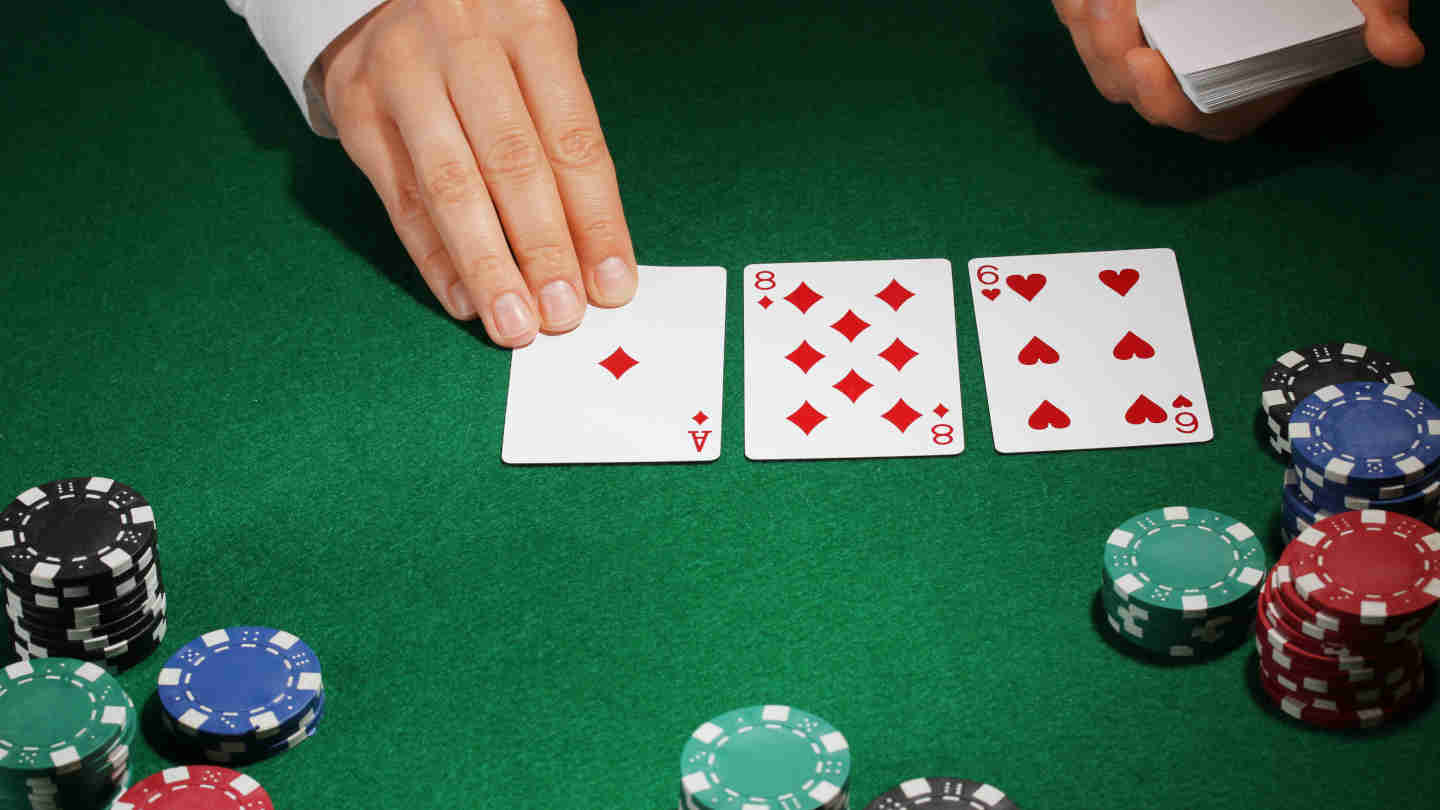When to Fold in Poker Pre-Flop & Postflop

8 minutes
Folding is one of the crucial skills in poker, and the sooner you start working on it, the better.
Many players see folding as a sign of weakness and they refuse to fold their poker hands even in situations in which they know they are beaten.
For this reason, it is important to learn when to fold in poker and why mastering this skill will have a positive impact on your win rate.
When to Fold Before the Flop in Poker?
Folding before the flop is a common occurrence in poker, especially if you have a weak hand. On average, professional poker players only play around one in every four hands.
One of the best ways to learn which hands you should play and which hands you should is preflop hand charts. These charts tell players which hands to fold, raise, and call based on the player’s position at the table.
Folding in the Early Position
For early positions, hand charts recommend playing a tighter range, which means fewer hands, while in late positions they recommend expanding your range and playing more hands.
But before we jump into reasons for playing fewer hands from early positions, let’s first define what we mean by early position.
Early position at the poker table depends on the number of players at the table:
- At a six-handed table, the first two seats on the direct left of the big blind (Under the Gun and Hijack) are considered the early position
- At a nine-handed table, the first three seats on the direct left of the big blind (Under the Gun, Under the Gun + 1, and Lowjack) are considered the early position
There are two main reasons why you should fold over 80% of your hands when you are in early positions:
- You are at a positional disadvantage (out of position)
- You have no information about what other players at the table will do
The first thing that you should consider when choosing which hands to play from an early position is that you will be out of position against most players at the table if any action happens.
The second aspect to take into account is that, since you are one of the first players to act, you don’t have information about what other players at the table will do.

Since poker is a game of information, this puts you at a pretty big disadvantage. Hence, you should look to fold around 75 to 80 percent of your hands from the early position.
With this said, you should be folding more hands in UTG than in Under the Gun + 1 and more hands in Under the Gun + 1 than in Lowjack.
Folding in the Late Position
For the late positions, hand charts recommend playing a lot more hands than from the early position, but not nearly as much as some players like to think.
Depending on the number of seats at the table, the late position can mean different things:
- At a six-handed table, the Button and the Cutoff (on the direct right of the Button) are considered late position
- At a nine-handed table, the Button, the Cutoff, and the Hijack (on the direct left of the Cutoff) are considered late position
You should be folding less when in late position because:
- You have positional advantage (relatively), you are in position in relation to the early seats
- You have information on players that acted before you
When you are in a late position, you have a relative positional advantage post flop and that is the first thing that you should keep in mind when choosing which hands to open and which hands to fold.
In addition to this, when you also have information about the players that acted before you and this gives you a big advantage, so you should look to fold “only” around 50 to 60 percent of hands.
With this said, based on their position at the table, you should be folding more hands in the Hijack than in the Cutoff and folding more hands in the Cutoff than on the Button.
Situational Folding Preflop in Poker
In addition to adjusting your opening ranges based on your position at the table, you should also be adjusting your preflop folding ranges based on specific situations during the hand such as:
- There has been a lot of action before you
- You have a short stack
- You are facing an unusually big raise

Preflop Folding Based on Previous Action
One of the situations in which you will want to widen your folding range preflop is when there has been a lot of action already in the hand, or in other words, there has been a lot of betting and raising before the action got to you.
For example, if the UTG player raised, and the HJ made a 3bet, you are in the CO with pocket 9s.
Now, while pocket 9s will be a slam dunk open from the CO most of the time, in this situation you should take advantage of the information you have (the action that happened) and fold them since there is a high likelihood that you don’t have the best hand.
Preflop Folding Based on Stack Size
If you play with a short stack or if you are a tournament player, you will often find yourself in a situation in which you have fewer than 100 big blinds.
It is very important that you understand how you should adjust your folding range based on the size of your stack since there are hands that play extremely well with a short stack and there are hands that are much better suited for playing with a deeper stack.
For example, hands that have good implied odds such as small pocket pairs go up in value when stacks are deeper and hands such as Ax suited go up in value when stacks are shallower.
Preflop Folding Based on the Odds You Are Getting
Last but not least, you should adjust your folding ranges pre-flop when you are facing a big raise.
If you are facing a big bet preflop, you should tighten your calling range and fold more hands than when you are facing a regular bet.
There are two reasons for this. The first one is that you are getting worse odds on your call, and the second reason is that players tend to raise bigger with the top of their range.
For example, if the UTG player raises to 2.5 bb and you are holding pocket 6s in the CO, you will probably want to call. However, if the UTG player raises to 10bb then you should be lean to folding a hand like pocket 6s.
When to Fold After the Flop in Poker?

Creating a guide on when you should fold in poker after the flop is much more complicated than creating a guide on folding preflop. The game that becomes much more complex after the community cards are dealt.
However, we will still do our best to point out some of the most obvious situations in which you should lean towards folding your hand.
Folding Postflop When You Miss the Flop
We will start with the most obvious situation in which you should be folding after the flop and that is when you completely miss the board.
If you don’t have anything going for you on the flop, your best course of action is to fold your hand and move on to the next one.
Although this seems like a straightforward move, many players fall into a trap in these situations as they begin fighting for the pot with a hand that has no equity. Avoiding putting any more chips into the pot in these situations will earn you a lot of money in the long run.
Folding Postflop When Facing Multiple Bets From a Nit
Another common spot in which players often fail to widen their folding range after the flop is when they are facing multiple bets from a player who does not play many hands and who does not bet often.
This situation happens often in low and mid stakes, but high stakes are not immune to nits also.
If you are in a spot where a poker nit is barreling with big bets, you should strongly consider adding some relatively strong hands to your folding range.
For example, if you are in a hand in which the UTG player who is very tight has raised preflop and then bets 75% of the pot on the flop and again 75% on the turn, there is a high chance that your top pair isn’t the best hand, and you should add it to your folding range.
Note that every situation in poker is specific and this is only a general guideline that you should keep in mind along with other factors before making a decision.
Folding Postflop When There is a Lot of Action

Multiway pots can be extremely difficult to play, especially if you are new to poker. The main reason is that players make the mistake of playing their ranges the same way they would in a heads-up scneario.
It is extremely important to realize, that in multi-way pots, equity is dispersed much more evenly and this turns a lot of hands that would be strong in heads-up pots into marginal holdings in multi-way pots.
For this reason, you should be expanding your folding range in multi-way pots when there is a lot of action in the hand.
For example, you are in a multi-way pot on the Button with A♣10♥ and the flop is A♦7♥8♣. The UTG player makes a 75% of the pot bet and the CO player raises his bet 2.5x.
In this spot, you should strongly consider folding your top pair since there is a high chance that you are already beaten.
Even if you are not, you are only a slight favorite against two very strong drawing hands which can push you out of the pot later with big bets coming on future streets.
Final Thoughts on Folding in Poker
Folding is one of the most underestimated parts of poker strategy. Knowing when to fold is what separates good poker players from the bad and average ones.
We hope that the tips we listed in this article will help you think about folding in the right way.
Keep in mind that these are just general guidelines. If you are looking to improve your poker game you should use them as a starting point to work on your folding game in these spots and not follow them blindly.
- Poker Squeeze Play – Which Hands Make the Most Sense for Squeezing? - August 10, 2023
- How to Play Low Pocket Pairs in Texas Hold’em - July 29, 2023
- How to Make Deep Runs in MTTs More Often - July 22, 2023















